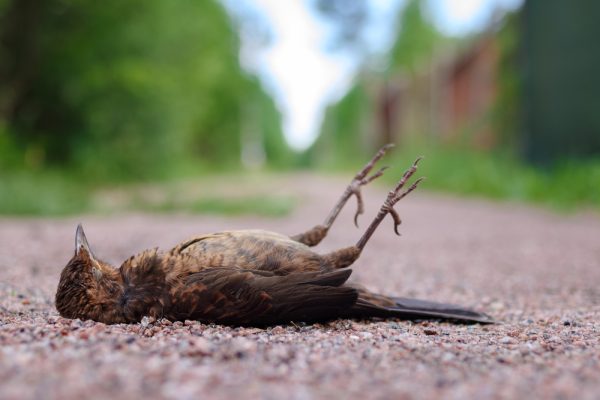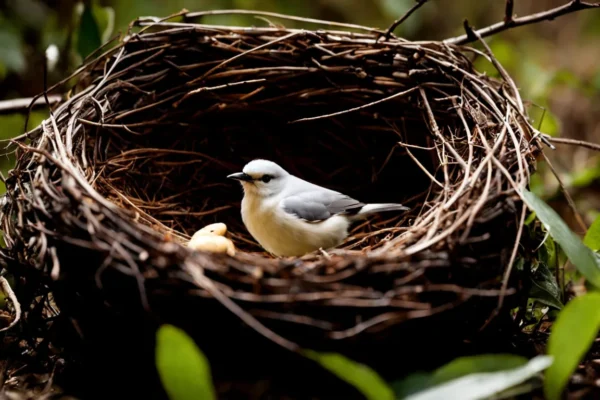The poem “Caged Bird” by Maya Angelou explores the themes of tyranny and emancipation via the use of potent metaphorical language. For those with limited time, the following is a brief response to your inquiry: The poem makes extensive use of metaphor, equating the imprisoned bird with someone under oppression and the free bird with someone who enjoys freedom.
It also conveys meaning via repetition, rhythm, and imagery.
This essay will focus on the metaphorical language that Angelou uses in “Caged Bird” to enhance the poem’s power and significance. We’ll examine the most significant instances of metaphor, imagery, rhythm, and repetition and discuss how they shed light on concepts like as liberty, captivity, and the human spirit.
Comparing Humans with Birds in Metaphor
The Free Bird Is a Symbol of Liberty
The poem “Caged Bird” by Maya Angelou uses a bird-human metaphor to examine the idea of freedom. In the poem, the free bird stands in for those who are able to live without constraints or limits. In this poetry, the free bird especially stands in for white Americans who were allowed to enjoy their freedom in society.
It stands for those who are able to take flight and fly across the wide sky, taking in everything that life has to offer, including its delights and marvels.
The freedom to explore and welcome new experiences fearlessly and unrestrictedly is symbolized by the free bird’s capacity to “leap on the back of the wind” and “float downstream.” This metaphor highlights the strength and beauty of freedom and how it may inspire and encourage others.
Angelou asks readers to consider their own aspirations for freedom and whatever constraints they could encounter in their own lives by drawing a comparison between people and the free bird. The allegory is a potent reminder that each and every person has the freedom to follow their goals and have an oppression-free life.
Oppression Is Represented by the Caged Bird
In Maya Angelou’s poetry, the caged bird stands in for those who are oppressed or imprisoned, in contrast to the free bird. The bird in the cage cannot stretch its wings to their full potential or enjoy the pleasures of flying. The bars around it keep it confined to the space within its cage. The bird in a cage is a symbol of Black Americans who experienced oppression and lack of freedom.
The caged bird represents the repression of ambitions and the impossibility of reaching full freedom; its “wings are clipped” and it “stands on the grave of dreams.” This metaphor emphasizes how oppression is a harsh reality and how it may affect a person’s soul and sense of self.
In order to highlight the many types of oppression that are present in society, such as racism, prejudice, and inequality, Angelou used the metaphor of the imprisoned bird. By using this metaphor, she advocates for a future in which each person may live free from the confines of their own metaphorical cages and urges readers to identify and oppose these oppressive forces.
We learn more about the ideas of tyranny and liberation by dissecting the poem “Caged Bird” by Maya Angelou, which uses a metaphor to compare birds to people. This metaphor is an effective tool for delving into the human condition and the need for freedom.
It serves as a reminder of the significance of standing out for justice and equality so that everyone has the chance to reach their full potential.
Rich Pictures Showing Contrast Pictures of the Freedom of the Free Bird
Maya Angelou depicts the independence and delight of the uncaged bird in the poem by using colorful images. One that “leaps on the back of the wind” and “floats downstream till the current ends” is the definition of the free bird.
These poetic lyrics conjure up the image of a bird flying freely and unhindered over the wide sky. The bird’s boundless flight over the horizon symbolizes the boundless opportunities and unadulterated joy of freedom.
In addition to personifying nature, Angelou emphasizes how the natural world accepts and revels in the bird’s liberation by comparing the sun to one that “drips its welcome” to the free bird. We can almost see the sun’s rays beaming down like a warm welcome upon the bird’s wide wings as it soars over the dazzling sky because of this vivid personification.
The Confinement of the Caged Bird in Imagery
On the other hand, Angelou depicts the anguish and limitations experienced by the bird in a cage using somber images. The description of the caged bird’s wings as “clipped and his feet are tied” provides a clear picture of the bird’s physical restraints, which are imposed on it despite its natural yearning to fly.
The bird is said to “open his throat to sing” when stuck behind the chilly bars of the cage, highlighting his need to completely express himself despite his restricted confinement. The sentence “beats his wings till its blood is red on the cruel bars” by Angelou, which depicts the imprisoned bird hurting itself in its fruitless quest for release, highlights the bird’s predicament even more.
The vivid, broad sky of the free bird is replaced with the glaringly small, gloomy cage of the one that is incarcerated. This striking contrast in visual iconography highlights the idea of how tyranny and limitations break a person’s soul and inherent freedoms.
Rhythm and Repetition Establishing Emphasis and Flow
The poem “Caged Bird” by Maya Angelou relies heavily on repetition and rhythm to establish emphasis and a feeling of flow. The deliberate repetition of words, phrases, or concepts for emphasis or to heighten the poem’s overall effect is known as repetition.
Contrarily, rhythm is the arrangement of stressed and unstressed syllables that gives a poem its melodic character.
Repeating to Highlight
Angelou uses repetition in “Caged Bird” to highlight certain concepts and themes. For example, the term “caged bird,” which is used often, is a potent metaphor for tyranny, imprisonment, and the desire for release.
its poem’s main idea is reaffirmed by its recurrence, which also highlights the suffering of the downtrodden.
The line “sings of freedom” is another instance of recurrence in the poem. Angelou emphasizes the passion and tenacity of the imprisoned bird by repeating this line, showing how it may find happiness and hope against all odds.
Readers are inspired and prompted to consider their own experiences of conquering challenges by this recurrence.
Using Rhythm to Improve Flow
The poetry “Caged Bird” flows more naturally because of its rhythmic form, which also helps the reader remember and find the poem more interesting. Angelou imitates the beat of a bird’s wings or the cadence of a song with her use of succinct, precise sentences and well-chosen phrases.
For instance, the poem’s opening lines, “A free bird leaps / on the back of the wind,” with their lyrical flow, evoke a feeling of movement and freedom. Throughout the whole poem, this rhythmic element attracts and holds the reader’s interest.
The poem “Caged Bird” gains more significance and effect via its use of rhythm and repetition, which also serves to accentuate the poetic techniques used. It is a potent and unforgettable work of writing because it enables readers to relate to Angelou’s ideas and feelings on a deeper level.
Final Thoughts
In “Caged Bird,” Maya Angelou deftly uses metaphorical language to examine current issues of tyranny and liberation. She creates a powerful image of two birds that reflect very different human experiences and situations via the use of extended metaphor, vivid imagery, and poetic elements like rhythm and repetition.
The use of metaphorical language heightens the effect and makes it possible for readers to experience the birds’ disparate worlds. The poem comes to life and its insights about the human spirit are amplified by Angelou’s deft use of literary devices.





